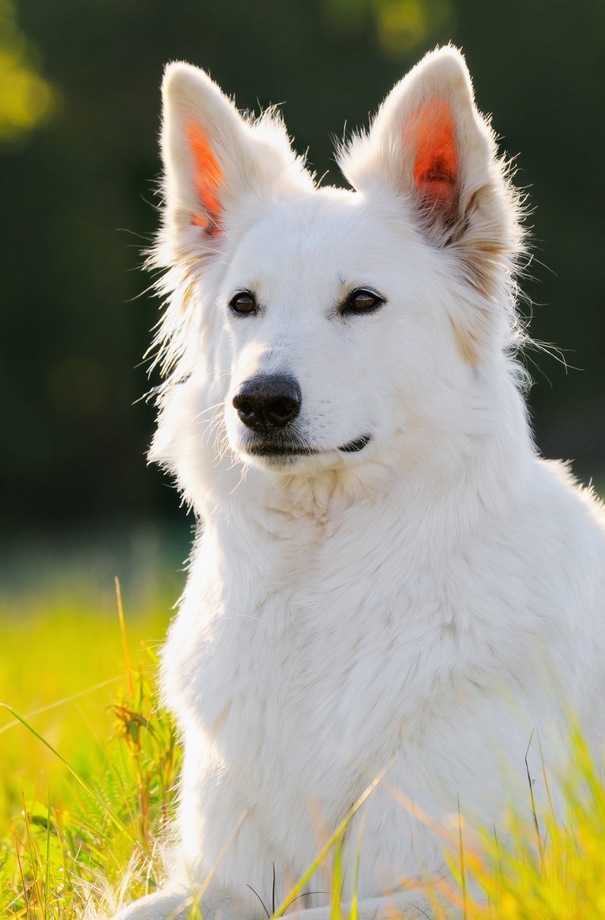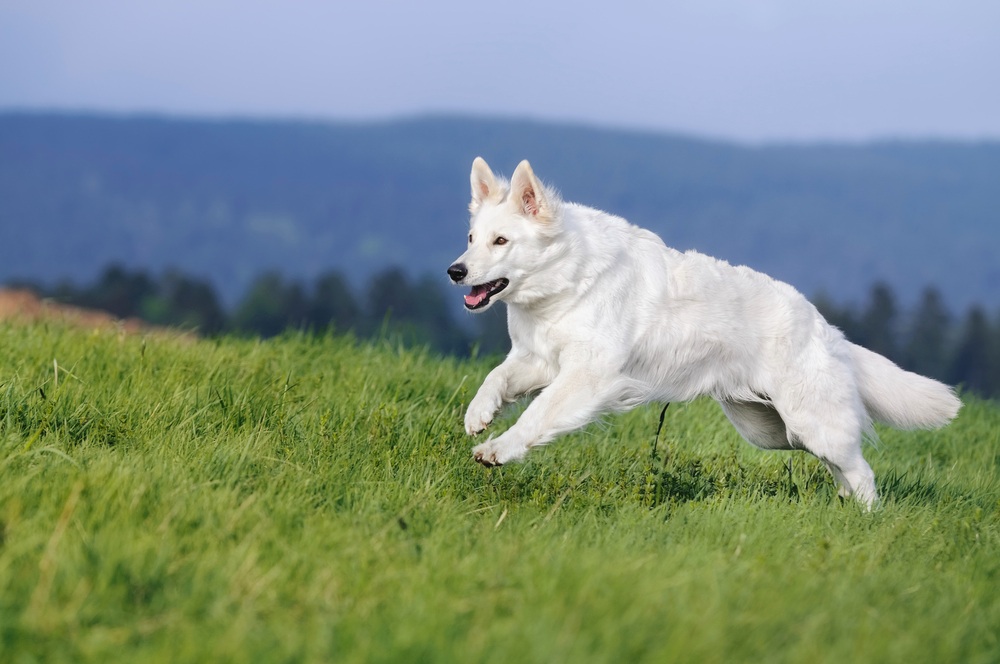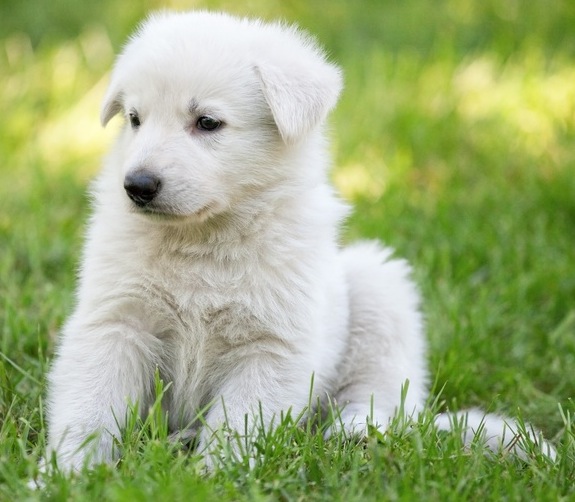White Shepherd Dog

This is actually a controversial offshoot from the German shepherd bloodline, whose origins may extend back to the earliest days of the breeding of these herding dogs. In the region of Alsace, on the border between France and Germany (which is why the German shepherd dog used to be called the Alsatian), these dogs used to show much more variety in appearance than is present in the breed today.
While short-coated German shepherds are seen almost universally today, there were also long-coated individuals bred, which are now very scarce, as well as a now extinct wire-coated variant. They also showed much more variation in coloration too, with white individuals being bred occasionally, although these were not favoured.
Some of the early German shepherds taken to the USA took the white gene with them however, and some breeders there found these dogs very appealing when they cropped up unexpectedly in litters.

They decided to use them to create the white shepherd bloodline, which still remains controversial in German shepherd dog circles today. This is why white shepherds are now more common in the USA therefore, rather than in Europe.

But although they were banned from the show ring on both continents by the 1960s, these white German shepherds were still popular with some enthusiasts. During the 1970s, examples of the breed were introduced from the USA to Switzerland (above), and have since become quite popular there, and in some other European countries - although not in Germany itself.

White shepherds are now bigger, averaging 71cm (28in) in height and weighing 59kg (130lb), compared with the German shepherd which should stand no more than 66cm (26in) at the shoulder and weigh a maximum of 43kg (95lb). Their coats are snow white in colour, with exposed areas of skin, such as the nose, and the eyes themselves being brown.